0.前言
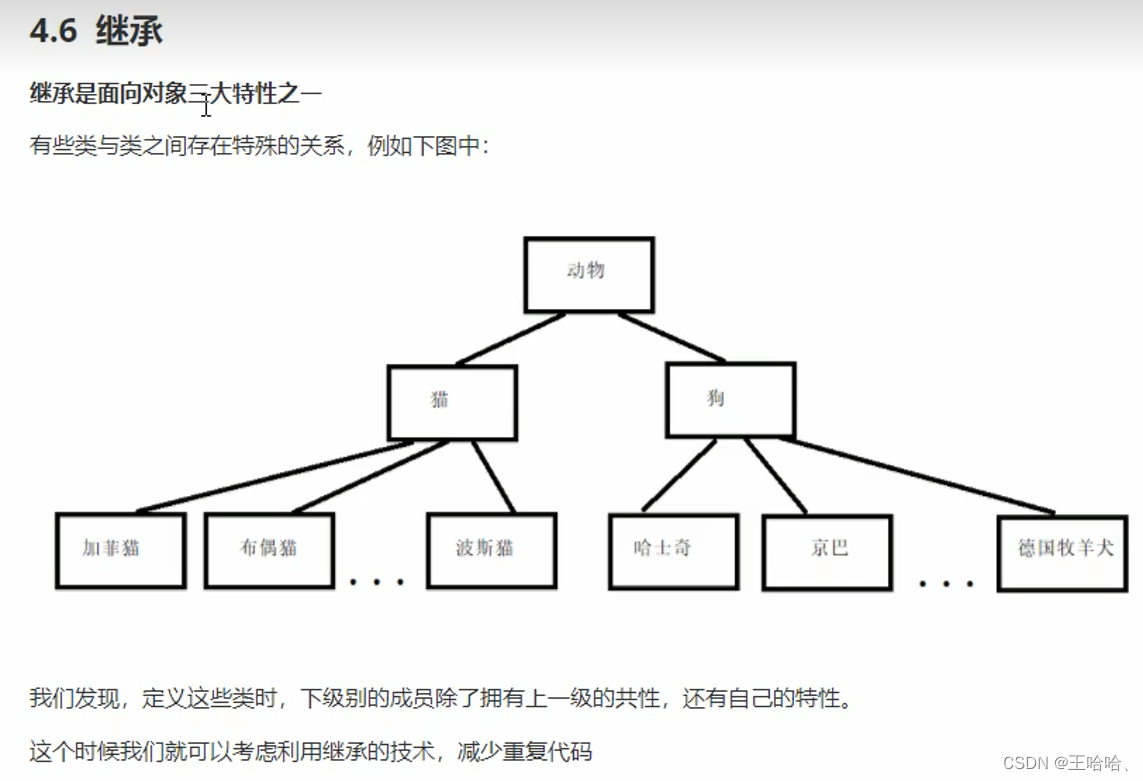
1.基本语法

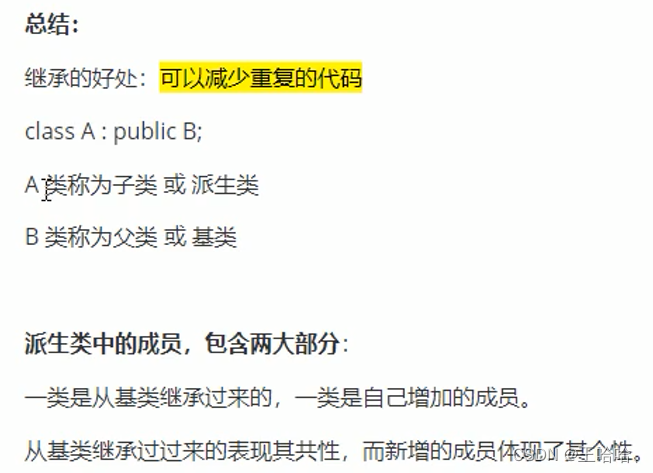
继承的用处就是极大的减少代码的重复性,如果没有用继承,看看以下代码,你知道了。。。。
基本实现代码:
#include <iostream>
using namespace std;
/******************************************/
void test01();
/******************************************/
int main()
{
/******************************************/
test01();
/******************************************/
system("pause");
return 0;
}
//Java页面
class Java {
public:
void header() {
cout << "首页、公开课、登录、注册...(公共头部)" << endl;
}
void footer() {
cout << "帮助中心、交流合作、站内地图...(公共底部)" << endl;
}
void left() {
cout << "Java,Python,C++...(公共分类列表)" << endl;
}
void content() {
cout << "Java学科视频" << endl;
}
};
//Python页面
class Python {
public:
void header() {
cout << "首页、公开课、登录、注册...(公共头部)" << endl;
}
void footer() {
cout << "帮助中心、交流合作、站内地图...(公共底部)" << endl;
}
void left() {
cout << "Java,Python,C++...(公共分类列表)" << endl;
}
void content() {
cout << "Python学科视频" << endl;
}
};
//Cpp页面
class Cpp {
public:
void header() {
cout << "首页、公开课、登录、注册...(公共头部)" << endl;
}
void footer() {
cout << "帮助中心、交流合作、站内地图...(公共底部)" << endl;
}
void left() {
cout << "Java,Python,C++...(公共分类列表)" << endl;
}
void content() {
cout << "Cpp学科视频" << endl;
}
};
void test01() {
//Java页面
cout << "Java下载视频页面如下:" << endl;
Java ja;
ja.header();
ja.footer();
ja.left();
ja.content();
cout << "——————————————————————————" << endl;
//Python页面
cout << "Python下载视频页面如下:" << endl;
Python py;
py.header();
py.footer();
py.left();
py.content();
cout << "——————————————————————————" << endl;
//Cpp页面
cout << "Cpp下载视频页面如下:" << endl;
Cpp cpp;
cpp.header();
cpp.footer();
cpp.left();
cpp.content();
cout << "——————————————————————————" << endl;
}
继承实现代码
#include <iostream>
using namespace std;
/******************************************/
void test01();
/******************************************/
int main()
{
/******************************************/
test01();
/******************************************/
system("pause");
return 0;
}
//公共页面
class BasePage {
public:
void header() {
cout << "首页、公开课、登录、注册...(公共头部)" << endl;
}
void footer() {
cout << "帮助中心、交流合作、站内地图...(公共底部)" << endl;
}
void left() {
cout << "Java,Python,C++...(公共分类列表)" << endl;
}
};
//Java页面
class Java : public BasePage {
public:
void content() {
cout << "Java学科视频" << endl;
}
};
//Python页面
class Python : public BasePage {
public:
void content() {
cout << "Python学科视频" << endl;
}
};
//Cpp页面
class Cpp :public BasePage {
public:
void content() {
cout << "Cpp学科视频" << endl;
}
};
void test01() {
//Java页面
cout << "Java下载视频页面如下:" << endl;
Java ja;
ja.header();
ja.footer();
ja.left();
ja.content();
cout << "——————————————————————————" << endl;
//Python页面
cout << "Python下载视频页面如下:" << endl;
Python py;
py.header();
py.footer();
py.left();
py.content();
cout << "——————————————————————————" << endl;
//Cpp页面
cout << "Cpp下载视频页面如下:" << endl;
Cpp cpp;
cpp.header();
cpp.footer();
cpp.left();
cpp.content();
cout << "——————————————————————————" << endl;
}
2.继承方式
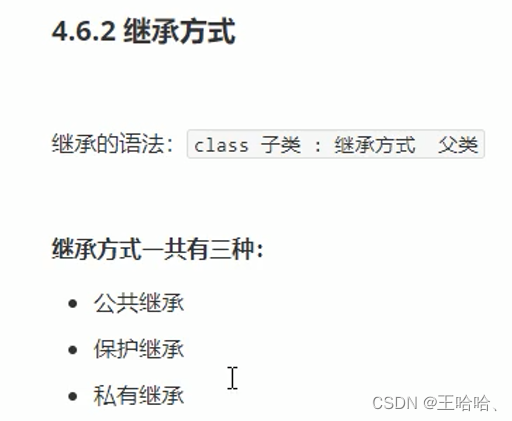
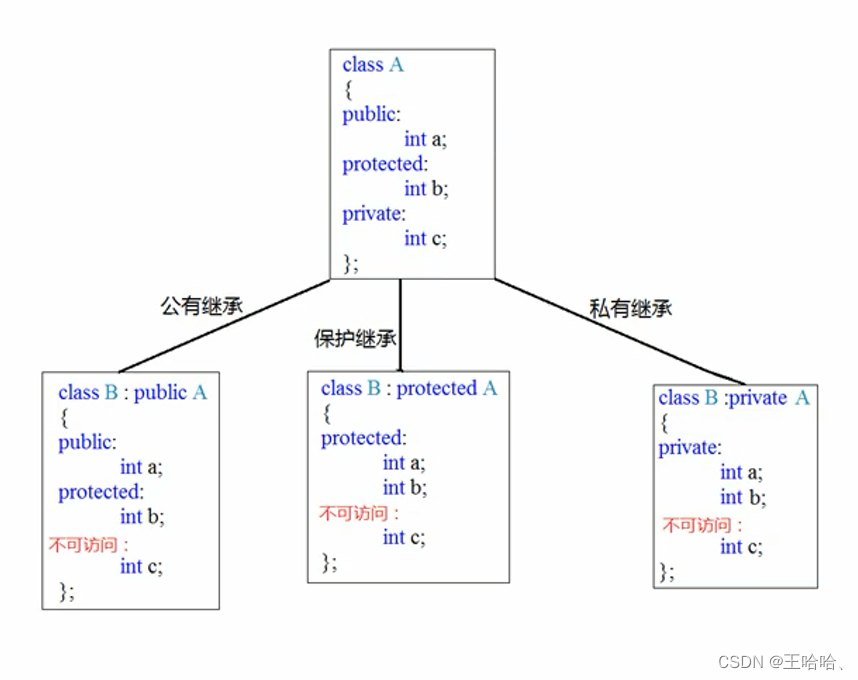
#include <iostream>
using namespace std;
/******************************************/
//公共继承
class Base1 {
public:
int m_A;
protected:
int m_B;
private:
int m_C;
};
class Son1 :public Base1 {
public:
void func() {
m_A = 100;//父类中的公共权限成员 到子类中依然是公共权限
m_B = 100;//父类中的保护权限成员 到子类中依然是保护权限
//m_C = 100;//父类中的私有权限成员 子类访问不到
}
};
void test01() {
Son1 s1;
s1.m_A = 100; //到Son1中 m_B是公共权限 类外可以访问
//s1.m_B = 100;//到Son1中 m_B是保护权限 类外访问不到
//s1.m_C = 100;//到Son1中 m_B是私有权限 类外访问不到
}
//保护继承
class Base2 {
public:
int m_A;
protected:
int m_B;
private:
int m_C;
};
class Son2 :protected Base2 {
public:
void func() {
m_A = 100;//父类中公共成员,到子类中变为了保护权限
m_B = 100;//父类中保护成员,到子类中变为了保护权限
//m_C = 100;//父类中私有成员 子类访问不到
}
};
void test02() {
Son2 s2;
//s2.m_A = 100;//在Son2中 m_A变为保护权限 ,因此类外访问不到
//s2.m_B = 100;//在Son2中 m_B保护权限 不可以访问
//s2.m_C = 100;//在Son2中 m_B私有权限 不可以访问
}
//私有继承
class Base3 {
public:
int m_A = 100;
protected:
int m_B = 100;
private:
int m_C = 100;
};
class Son3 :private Base3 {
public:
void func() {
m_A = 100;//父类中公共成员,到子类中变为了私有权限
m_B = 100;//父类中保护成员,到子类中变为了私有权限
//m_C = 100;//父类中私有成员 子类访问不到
}
};
void test03() {
Son3 s3;
//s3.m_A = 100;//在Son3中 m_A变为私有权限 ,因此类外访问不到
//s3.m_B = 100;//在Son3中 m_A变为私有权限 ,因此类外访问不到
//s3.m_C = 100;//在Son3中 m_B私有权限 不可以访问
}
//孙类访问父类
class GrandSon2 :public Son2 {
public:
void func() {
m_A = 100;//在Son2中 m_A变成了保护权限 孙类可以类内访问
m_B = 100;//在Son2中 m_B仍然为保护权限 孙类可以类内访问
//m_C = 100;//父类中私有成员 子类访问不到 孙类也访问不到
}
};
class GrandSon3 :public Son3 {
public:
void func() {
//m_A = 100;//在Son3中 m_A变成了私有权限 孙类访问不到
//m_B = 100;//在Son3中 m_B变成了私有权限 孙类访问不到
//m_C = 100;//父类中私有成员 子类访问不到 孙类也访问不到
}
};
/******************************************/
int main()
{
/******************************************/
test01();
test03();
test02();
/******************************************/
system("pause");
return 0;
}
3.继承中的对象模型
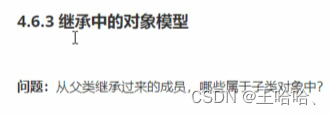

代码
#include <iostream>
using namespace std;
/******************************************/
//继承中的对象模型
class Base {
public:
int m_A;
protected:
int m_B;
private:
int m_C;
};
class Son :public Base {
public:
int m_D;
};
//利用开发人员命令提示工具查看对象模型
//跳转盘符 E:
//跳转文件路径 cd 具体路径下
//查看命名
//cl /d1 reportSingleClassLayout类名 文件名
//然后按tab健
void test01() {
//输出为:16
//父类中所有非静态成员属性都会被子类继承下去
//父类中私有成员属性 是被编译器给隐藏了,因此是访问不到,但是确实是被继承下去了
cout << "size of Son = " << sizeof(Son) << endl;
}
/******************************************/
int main()
{
/******************************************/
test01();
/******************************************/
system("pause");
return 0;
}
利用开发人员命令提示工具查看对象模型:
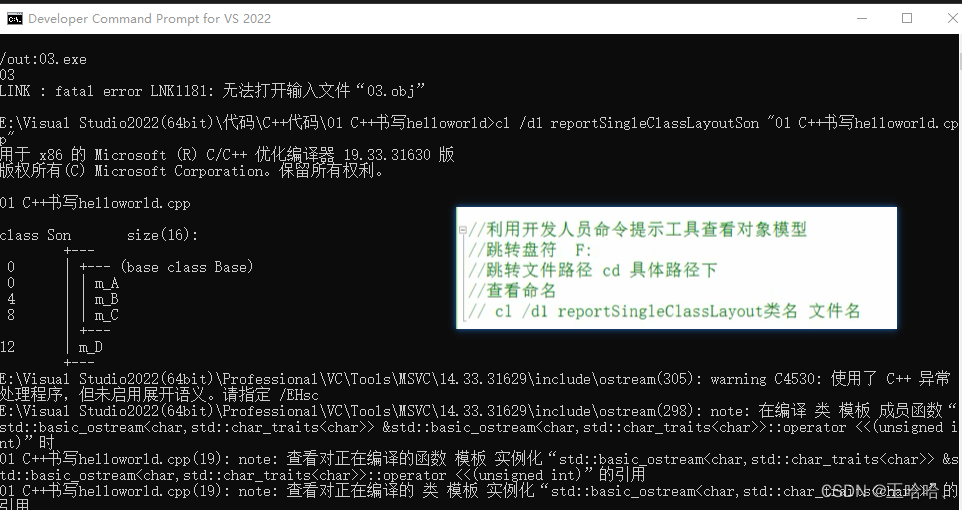
其具体步骤如下:

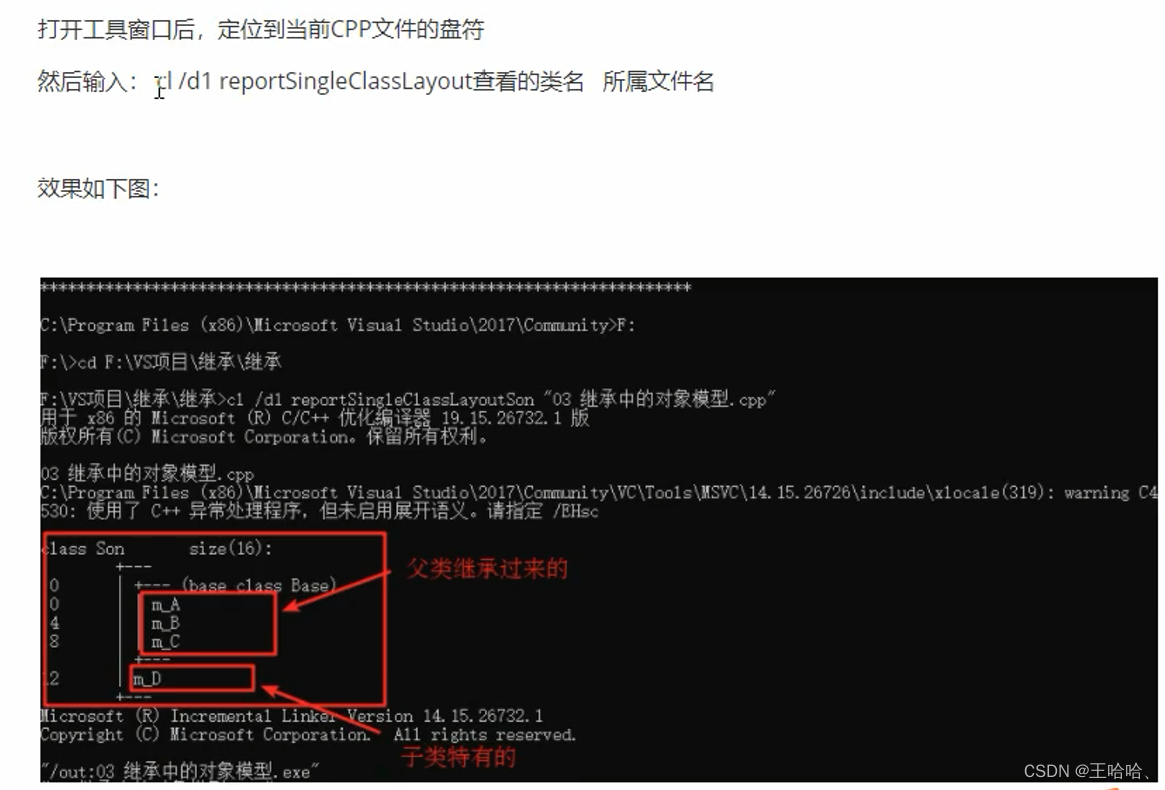
如果不清楚,去跳转网址:
https://www.bilibili.com/video/BV1et411b73Z?p=129&spm_id_from=pageDriver&vd_source=fb8dcae0aee3f1aab700c21099045395
从05:55开始观看
4.继承中构造和析构顺序
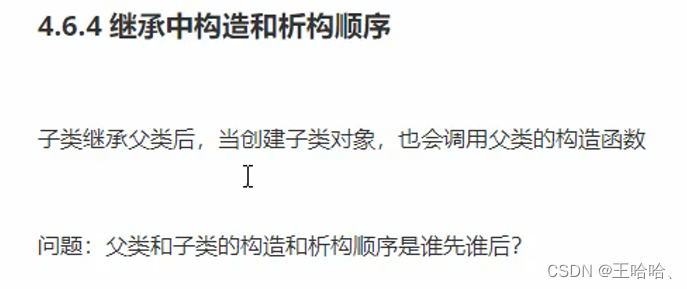
**总结:**继承中 先调用父类构造函数,再调用子类构造函数,析构顺序与构造相反
#include <iostream>
using namespace std;
/******************************************/
//继承中的构造和析构函数
class Base {
public:
Base() {
cout << "Base的构造函数!" << endl;
}
~Base() {
cout << "Base的析构函数!" << endl;
}
};
class Son:public Base {
public:
Son() {
cout << "Son的构造函数!" << endl;
}
~Son() {
cout << "Son的析构函数!" << endl;
}
};
void test01() {
//继承中 先调用父类构造函数,再调用子类构造函数,析构顺序与构造相反
Son s;
}
/******************************************/
int main()
{
/******************************************/
test01();
/******************************************/
system("pause");
return 0;
}
5.继承同名成员处理方式


代码
#include <iostream>
using namespace std;
/******************************************/
class Base {
public:
Base() {
m_A = 100;
}
void func() {
cout << "Son-func()调用" << endl;
}
void func(int a) {
cout << "Base-func(int a)调用" << endl;
}
public:
int m_A;
};
class Son :public Base {
public:
Son() {
m_A = 200;
}
//当子类与父类拥有同名的成员函数,子类会隐藏父类中所有版本的同名成员函数
//如果想访问父类中被隐藏的同名成员函数,需要加父类的作用域
void func() {
cout << "Son-func()调用" << endl;
}
public:
int m_A;
};
void test01() {
Son s;
//子类对象加作用域才可以访问到父类同名成员
cout << s.m_A << endl << s.Base::m_A << endl;
s.func();
s.Base::func();
s.Base::func(12);
}
/******************************************/
int main()
{
/******************************************/
test01();
/******************************************/
system("pause");
return 0;
}
结果
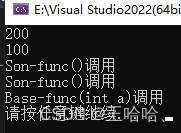
6.继承同名静态成员处理方式
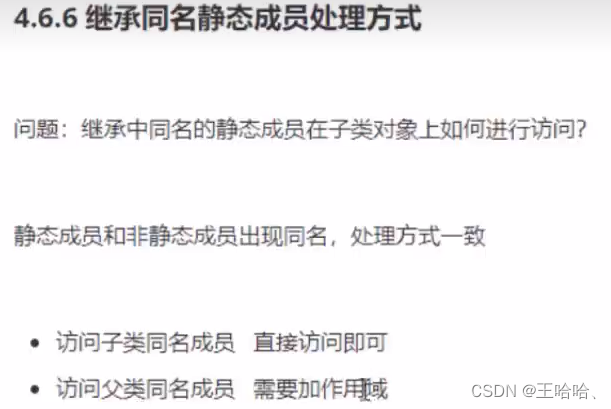

代码
#include <iostream>
using namespace std;
/******************************************/
class Base {
public:
static int m_A;
static void func() {
cout << "Base-func()调用" << endl;
}
static void func(int a) {
cout << "Base-func(int a)调用" << endl;
}
};
int Base::m_A = 100;
class Son :public Base {
public:
static int m_A;
static void func() {
cout << "Son-func()调用" << endl;
}
};
int Son::m_A = 200;
void test01() {
cout << "同名成员属性:" << endl;
//1、通过对象访问
cout << "通过对象访问:" << endl;
Son s;
cout << "Son m_A = " << s.m_A << endl;
cout << "Base m_A = " << s.Base::m_A << endl;
//2、通过类名访问
cout << "通过类名访问:" << endl;
cout << "Son m_A = " << Son::m_A << endl;
//第一个::代表通过类名方式访问 第二个::代表访问父类作用域下的m_A
cout << "Base m_A = " << Son::Base::m_A << endl << endl << endl;;
cout << "同名函数属性:" << endl;
//1、通过对象访问
cout << "通过对象访问:" << endl;
Son s2;
s2.func();
s2.Base::func();
//2、通过类名访问
cout << "通过类名访问:" << endl;
Son::func();
Son::Base::func();
//出现同名,子类会隐藏掉父类中所有同名成员函数,需要加作用域访问
Son::Base::func(100);
}
/******************************************/
int main()
{
/******************************************/
test01();
/******************************************/
system("pause");
return 0;
}
结果:
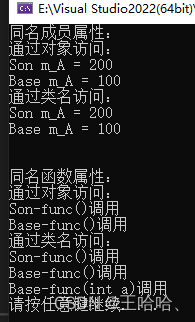
7.多继承语法
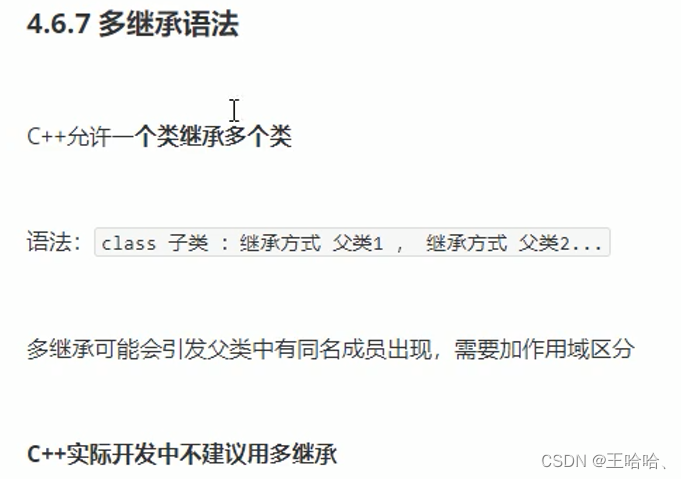

代码:
#include <iostream>
using namespace std;
/******************************************/
class Base1 {
public:
Base1() {
m_A = 100;
}
public:
int m_A;
};
class Base2 {
public:
Base2() {
m_A = 200;//开始是m_B 不会出问题 ,但是改为m_A就出现不明确
}
public:
int m_A;
};
//语法: class 子类:继承方式 父类1,继承方式 父类2,.....
class Son :public Base1, public Base2 {
public:
Son() {
m_A = 300;
m_D = 400;
}
public:
int m_A;
int m_D;
};
//多继承容易产生成员同名的情况
//通过使用类名作用域可以区分调用哪个基类的成员
void test01() {
Son s;
cout << "size of Son = " << sizeof(s) << endl;
cout << "Base1:m_A = " << s.Base1::m_A << endl;
cout << "Base2:m_A = " << s.Base1::m_A << endl;
cout << "Son:m_A = " << s.m_A << endl;
}
/******************************************/
int main()
{
/******************************************/
test01();
/******************************************/
system("pause");
return 0;
}
结果:
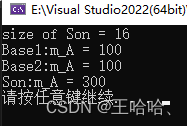
利用开发人员命令提示工具查看对象模型:
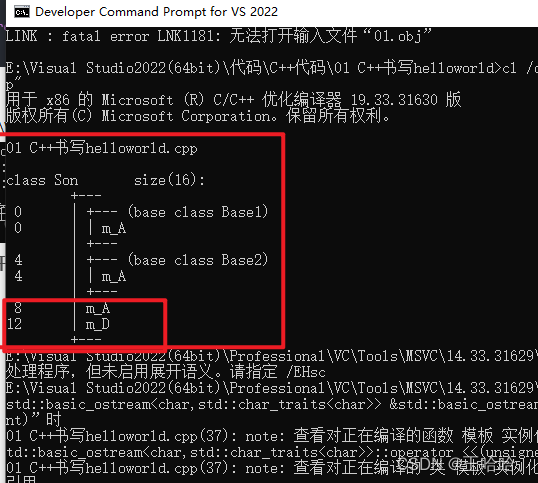
8.菱形继承
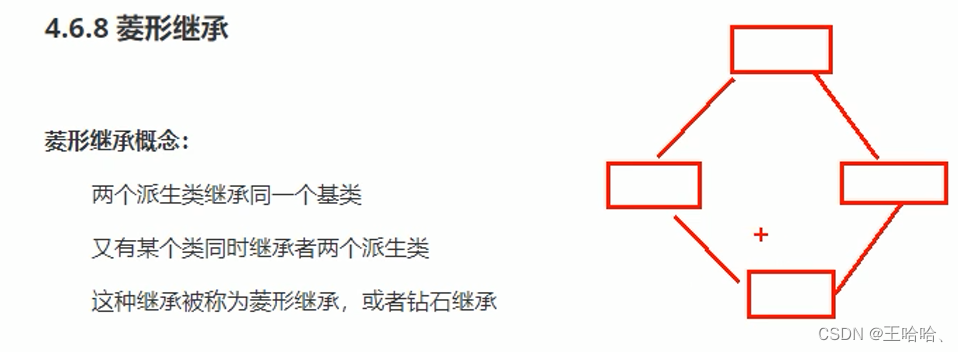
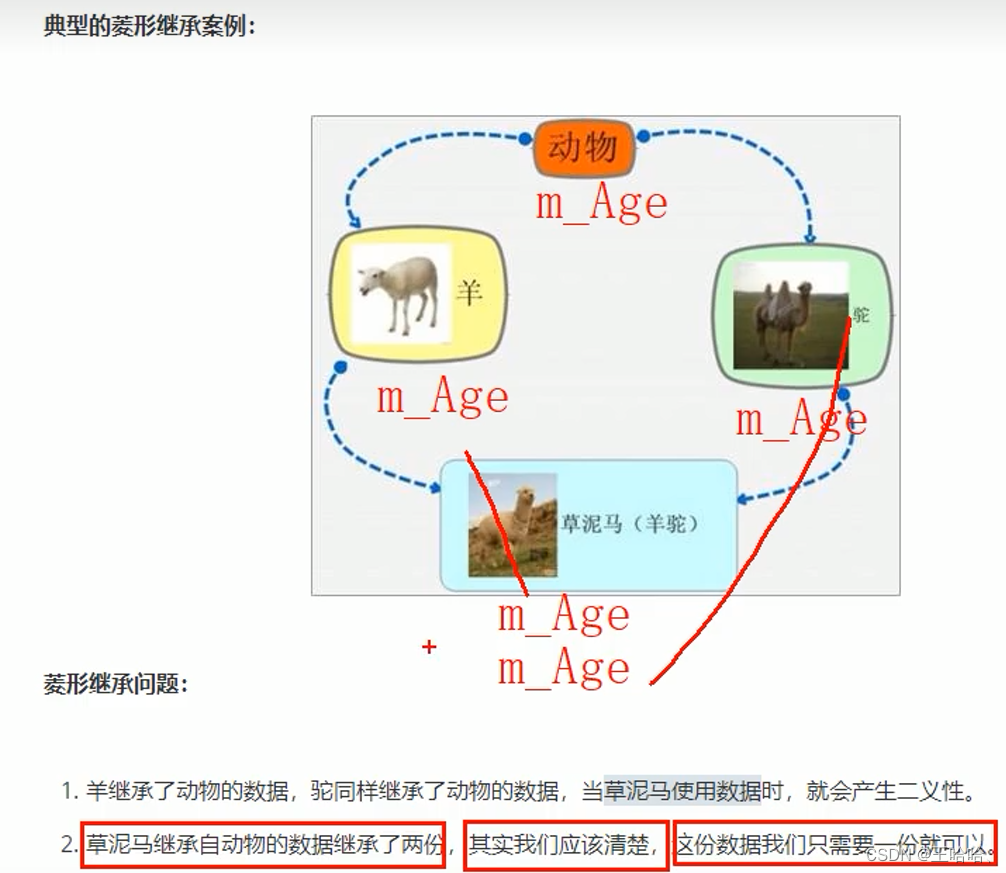

如果没有用虚继承,会导致有歧义,相当于两个父类、多继承的不明确问题
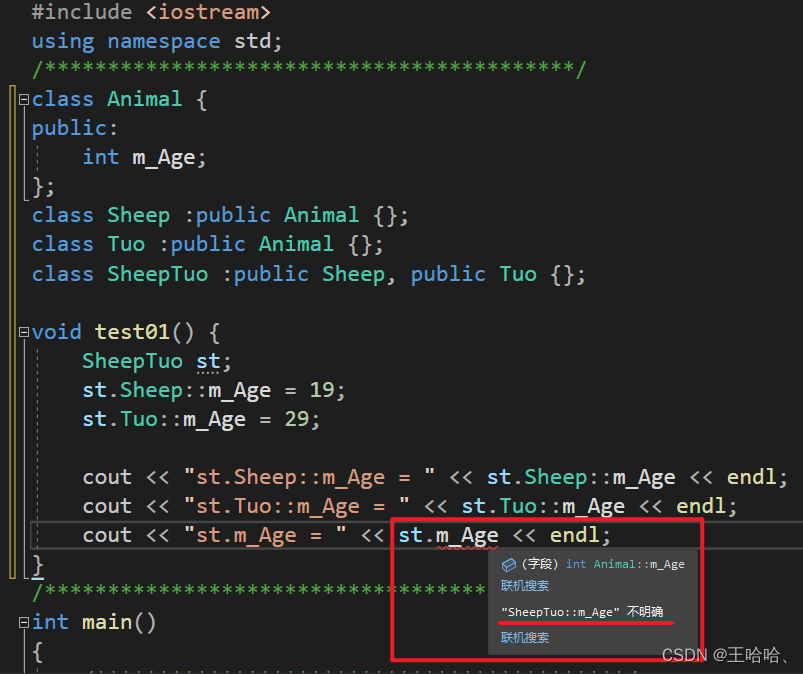
代码
#include <iostream>
using namespace std;
/******************************************/
class Animal {
public:
int m_Age;
};
//继承前面加virtual关键字后,变为虚继承
//此时公开的父类Animal称为虚基类
class Sheep :virtual public Animal {};
class Tuo :virtual public Animal {};
class SheepTuo :public Sheep, public Tuo {};
void test01() {
SheepTuo st;
st.Sheep::m_Age = 19;
st.Tuo::m_Age = 29;
cout << "st.Sheep::m_Age = " << st.Sheep::m_Age << endl;
cout << "st.Tuo::m_Age = " << st.Tuo::m_Age << endl;
cout << "st.m_Age = " << st.m_Age << endl;
}
/******************************************/
int main()
{
/******************************************/
test01();
/******************************************/
system("pause");
return 0;
}
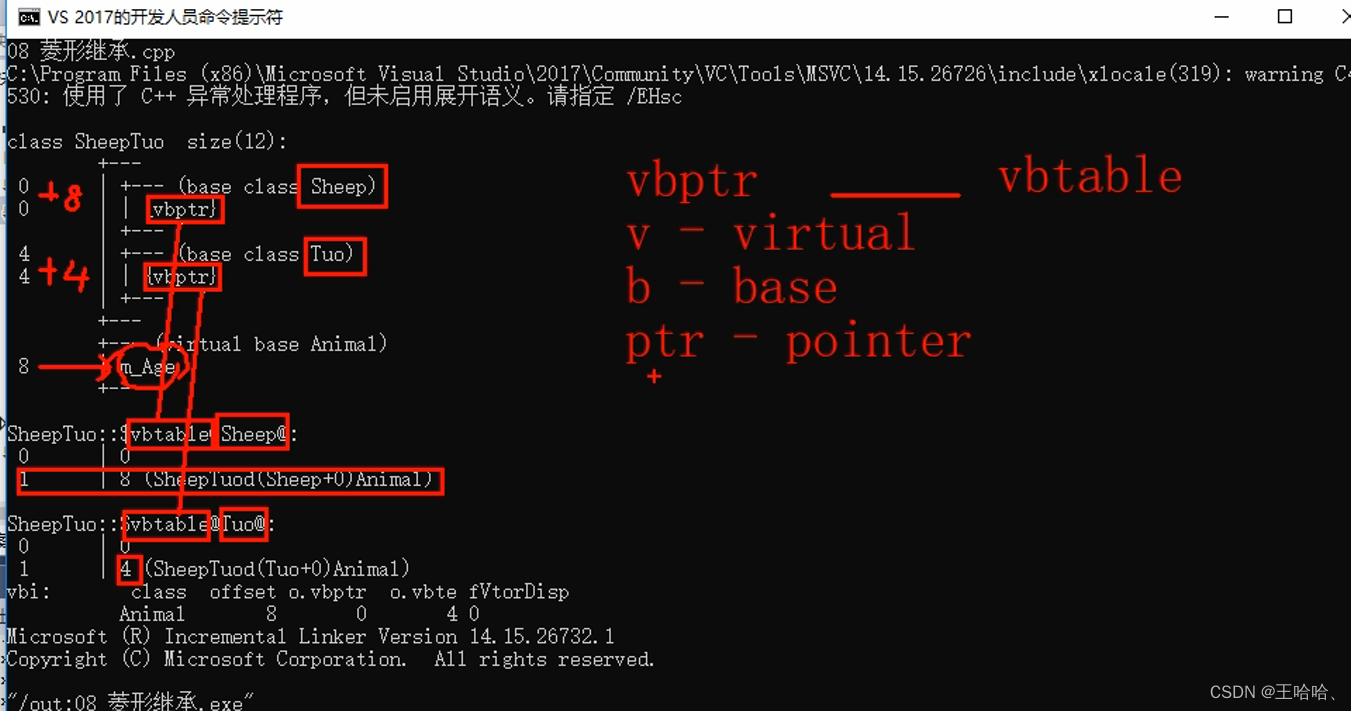
结果:
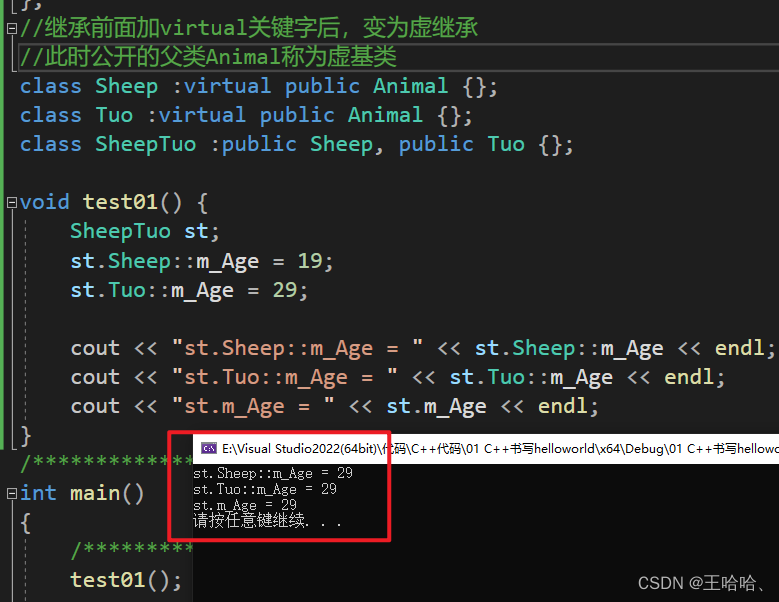




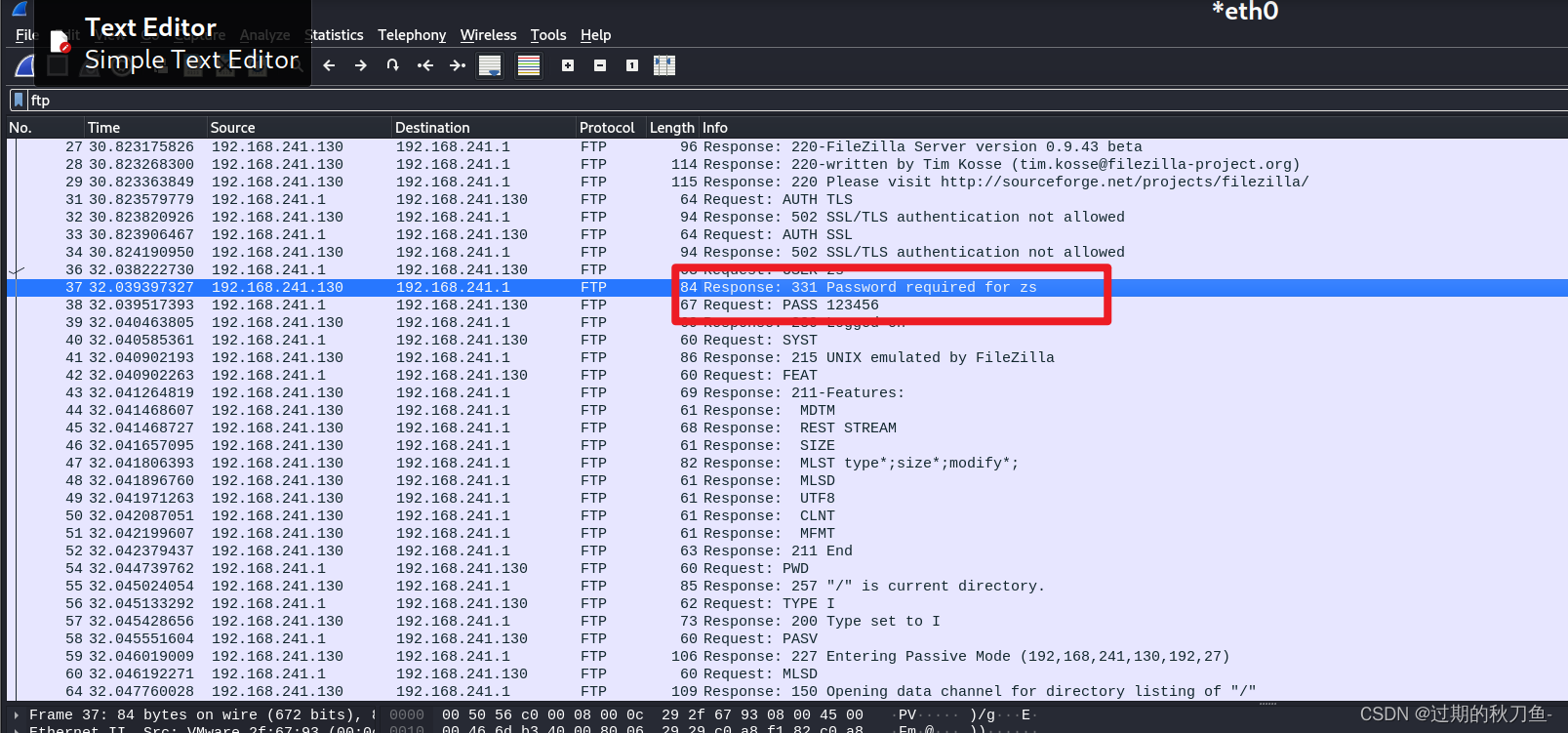


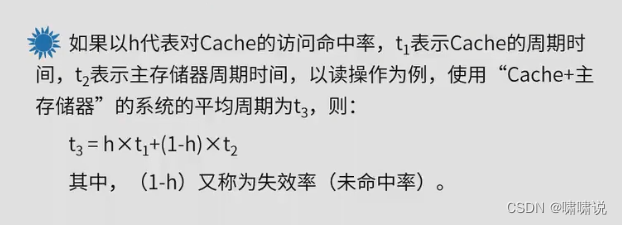





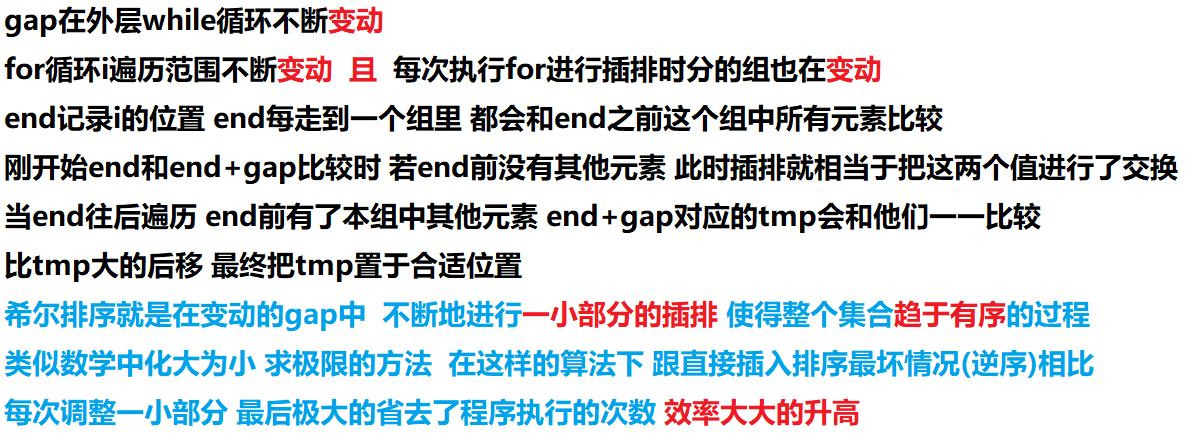
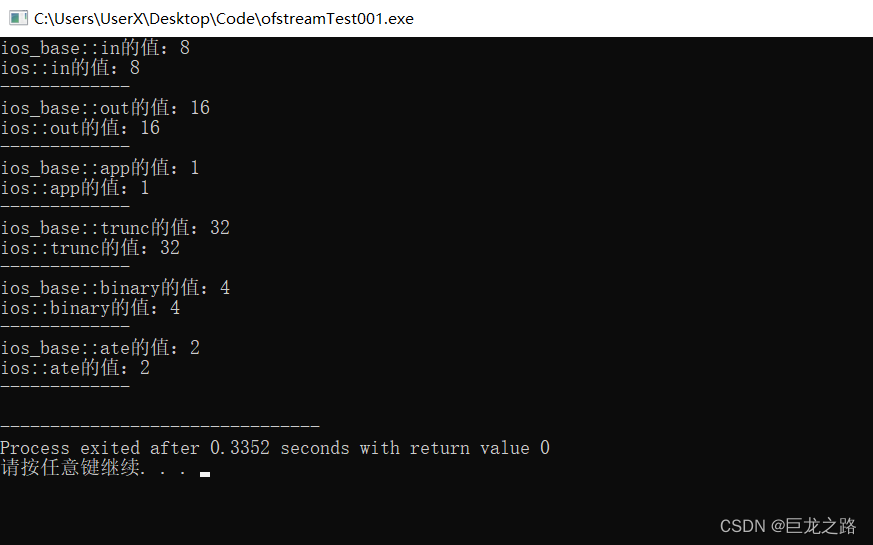
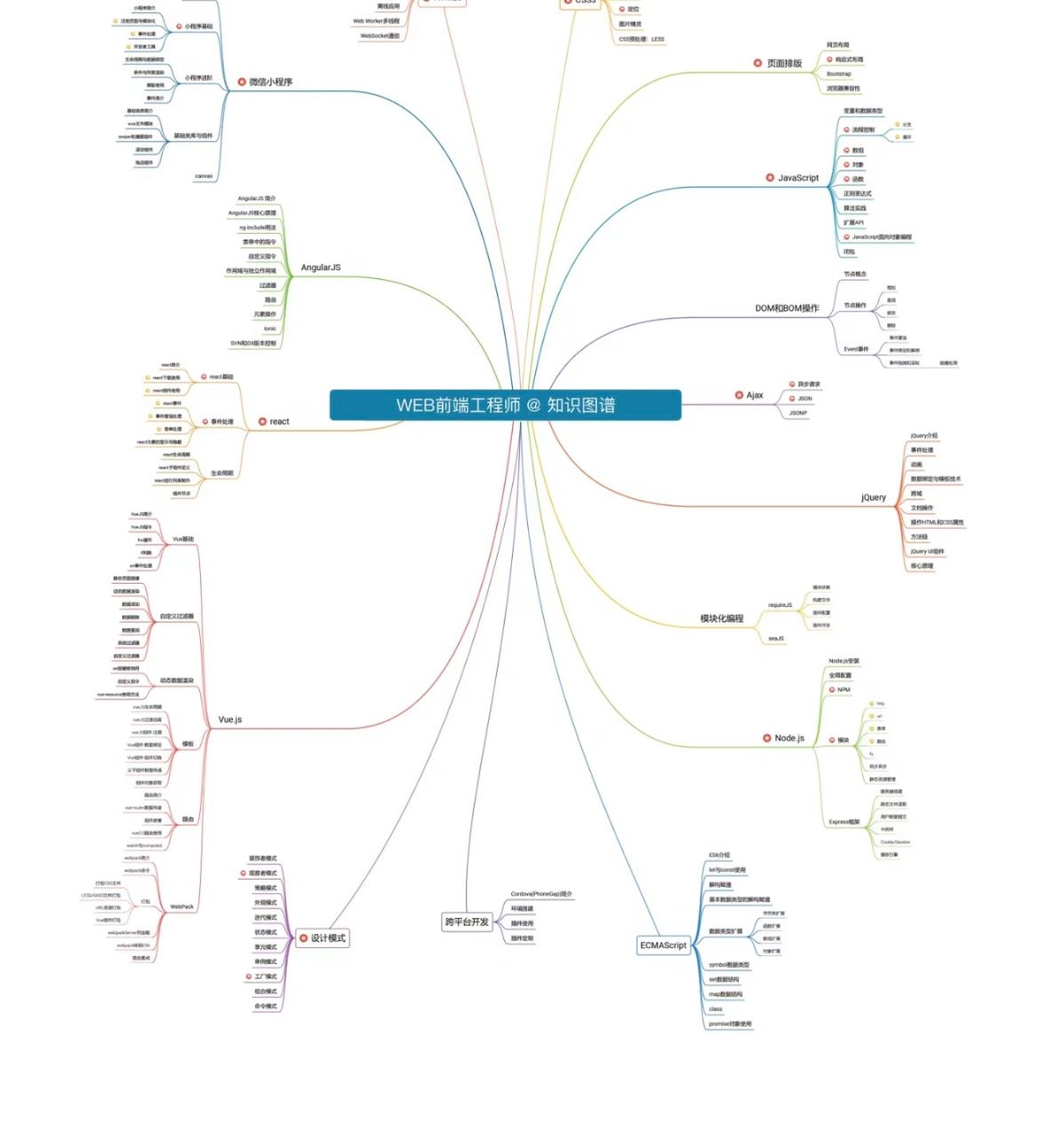
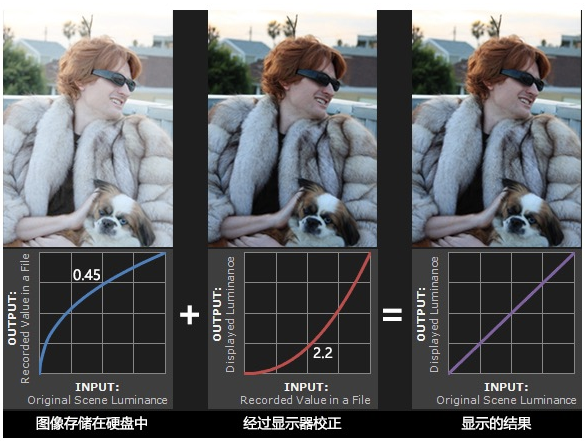
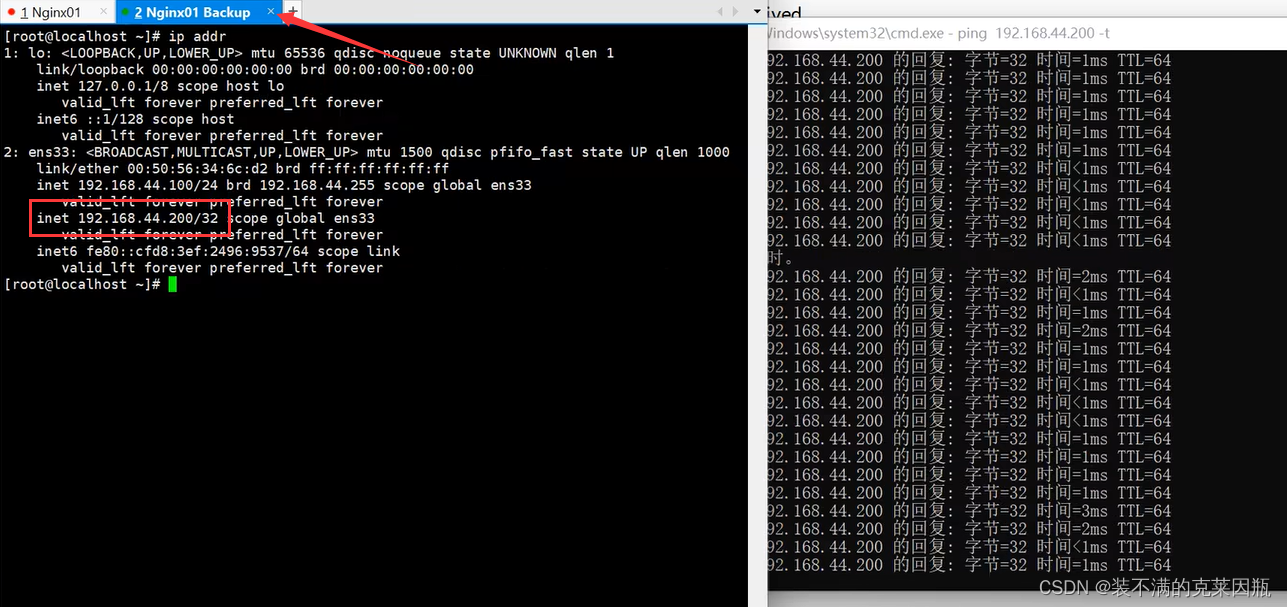
![[国产MCU]-BL602开发实例-开发环境搭建](https://img-blog.csdnimg.cn/0bec42d3b60745b79b1de19dd4fba1ca.png#pic_center)
